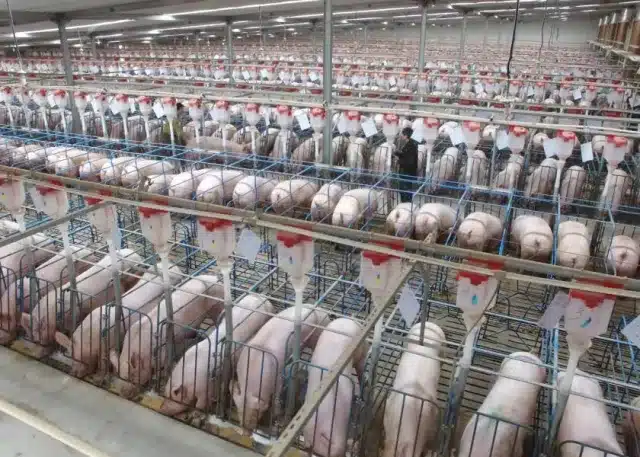In southern suburb of Ezhou, a city in the Hubei province in central China, there is a gigantic 26-story apartment building overlooking the main road. It houses no employees or families: it is the largest pig farm in the world, with a slaughter capacity of 1,2 million pigs a year.
A rather "muscular" response to China's insatiable demand for pork, the most consumed animal protein in the Asian country.
A skyscraper for pigs
The new skyscraper-sized farm began production at the beginning of October, when the manufacturing company (the Hubei Zhongxin Kaiwei Modern Farming) introduced the first 3.700 animals to the farm. Zhongxin Kaiwei is a newcomer to the pig industry: it used to be a cement factory, and it is no coincidence that this skyscraper is located right next to Hubei Xinshiji Cement, one of the company's headquarters.
The slump in China's cement industry has forced companies like this to diversify their investments: Jin Lin, the general manager of the company, said that the company considers modern agriculture as a promising sector, and the opportunity to use its materials: in other words, from residential construction to food construction.
1,2 million pigs per year, food and energy
According to statements on the company's official WeChat account, the pig farm has two buildings. A building identical to the operational site is nearing completion; when fully functional, the complex will offer a total area of 800.000 square meters and house 650.000 animals.
In the skyscraper farm that cost over 4 billion yuan (half a billion euros!) there are controlled gas, temperature and ventilation conditions: the animals are fed through more than 30.000 automatic feeding points, under the supervision of a central control room .
The Chinese company says that pig waste will be treated to generate biogas, to be used for energy production and water heating on the farm. Workers will have to undergo multiple cycles of disinfection and testing before receiving the OK to enter, and will only be able to leave the site at the end of the production cycle, i.e. once a week.
The risks and worries
China tries to improve its pork production (it consumes around half of all the pork of the world) after losing 100 million heads due to swine fever between 2018 and 2020. In part, it did so by feeding a more or less legitimate pig market of incredible sizebut that shouldn't be enough.

In 2019, China's Ministry of Agriculture and Rural Affairs authorized the construction of multi-storey farms. The announcement sparked a real rush among investors, who consider this production model very profitable and safe.
“Compared with traditional farming methods, high-rise pig farms are smarter, with a high level of automation and biosecurity. And they don't waste territory,” he says Zhu Zengyong of the Chinese Academy of Agricultural Sciences.
In the southwestern province of Sichuan alone, 2 multi-storey farms have been planned or under construction for 64 years. Regardless of what Chinese experts say, however, the probability of ever larger disease outbreaks is increasing. Intensive facilities can reduce the interaction between domestic and wild animals (and their diseases) as much as desired, but any contagion would spread like wildfire.
It clearly also applies to the intensive care facilities of Western countries. The higher density of animals carries a higher risk of spread, amplification and mutation of infectious pathogens. It's obvious. Not to mention the sustainability of these plants with the need to reduce meat consumption, for issues of health and of the environment.
Next time you think about eating bacon or ham, remember that your choices also help fuel this next trend: pig skyscrapers.


